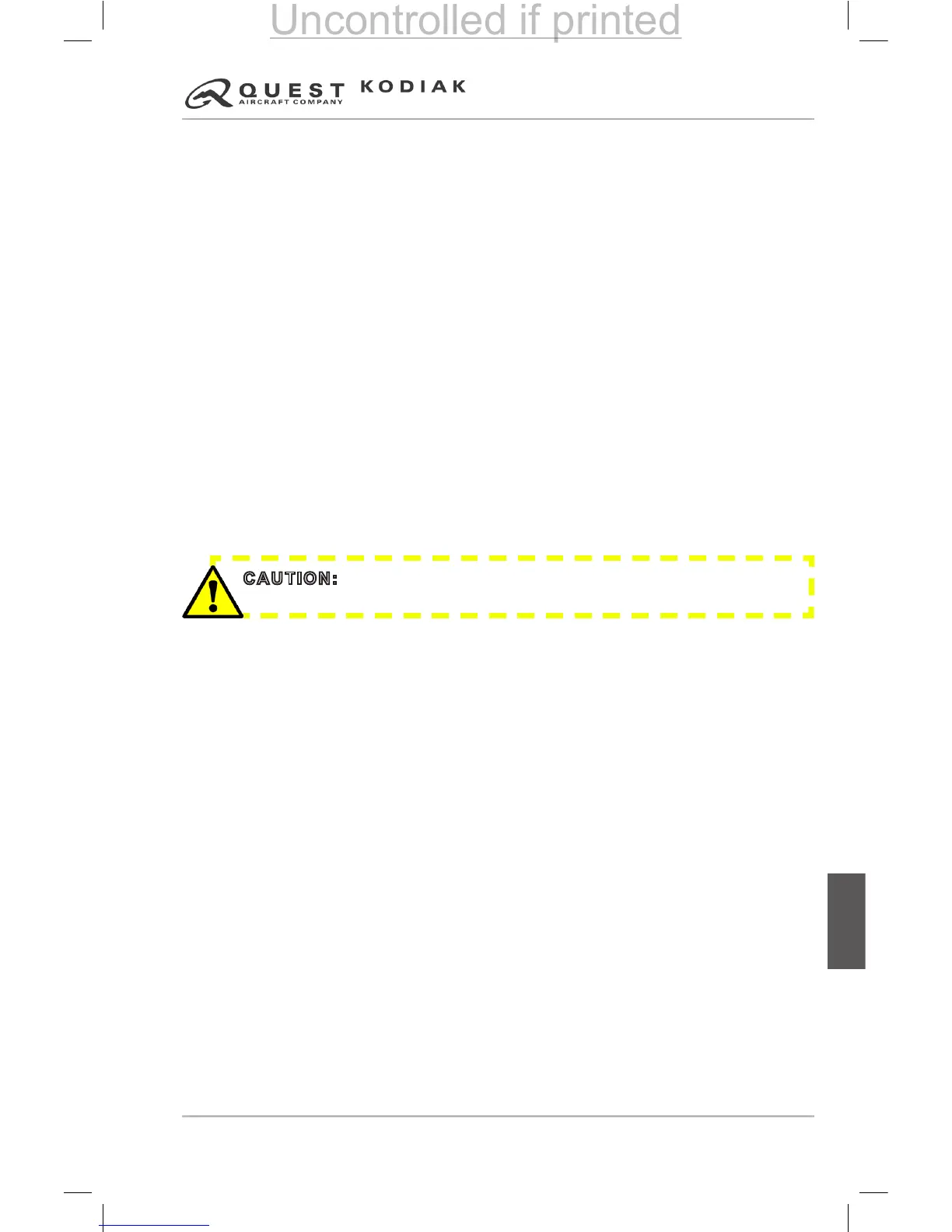ALTIMETERS
Altitude information is also provided within the Garmin G1000 Primary Flight
Displays. The Altitude information is displayed in digital format as well as
electronic “tape” format.
A backup altimeter is also installed on the KODIAK as standard equipment.
Airplane altitude is depicted on the altimeter and includes a knob near the
lower left portion of the indicator to provide adjustment of the instrument’s
barometric scale to match the current altimeter setting.
7-24 AUTOMATIC TRIM SYSTEM
To compensate for pitch trim changes when varying ap position, an
automatic trim system is provided. The automatic trim system consists of an
electric pitch trim actuator, an airspeed switch, the ap position potentiometer,
the pitch trim potentiometer, the trim disconnect switch, and an electrical
ap/trim compensation unit. This system automatically engages the electric
pitch trim servo in the appropriate direction when the aps are in transit. For
example, when the aps are transitioning from 20° to 10°, nose up trim is
applied automatically. Also, when the aps are transitioning in the opposite
direction, 10° to 20°, nose-down trim is automatically applied. The automatic
trim system is active when the aps are in transit between 5° and 35°.
The automatic trim system may be overridden by manual electrical inputs of
pitch trim in the opposite direction of the automatic trim. For example, if the
automatic trim system is trimming the aircraft nose down, and the pilot selects
nose-up trim with the electric trim switch on the control yoke, the servo will
operate in the nose-up direction and will override the automatic trim system.
The automatic trim system may also be manually overridden by grasping the
trim wheel by hand.
The automatic trim system is disabled any time the autopilot system is
engaged, to prevent the two systems from interfering with each other. The
autopilot has its own automatic trim system to compensate for pitch trim
changes with varying ap settings.
The automatic trim system references ap position through the ap position
indicator signal coming from the ap drive system. The ap position indicator
signal is a variable voltage signal which varies from approximately 0-3.5 volts.
0 volts represents a ap position of 0° and 3.5 volts represents 35° of aps.
A comparator in the automatic trim system senses when the ap position
voltage is changing (either increasing or decreasing). When the comparator
senses an increasing voltage (aps lowering), the pitch trim runs in the nose-
down direction. Also, when the comparator senses a decreasing voltage
(aps retracting), the pitch trim runs in the nose-up direction.
The automatic trim system is disabled on the ground through an airspeed
switch to prevent accidental placing of the aircraft in an out-of-trim condition
before takeoff, i.e. the pilot sets the pitch trim for takeoff, then selects the
aps to takeoff position (20°) and the auto trim system runs the pitch trim
CAUTION: The manual Electric Pitch Trim Switch and the Flap
Conguration Trim feature will not operate when the Avionics switch is off.
